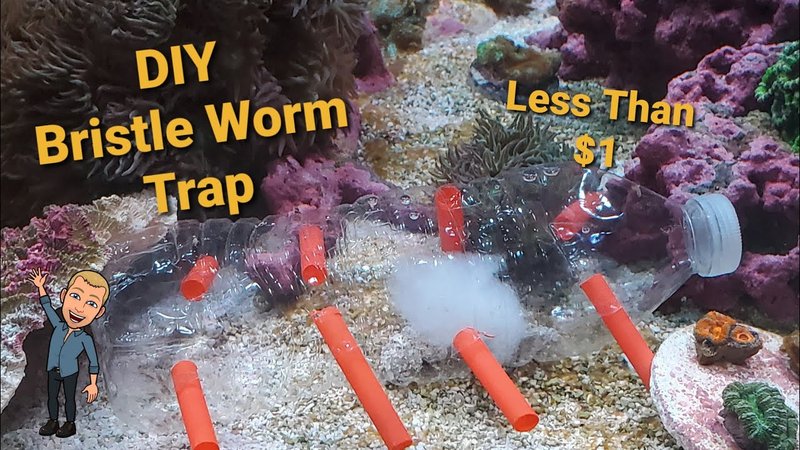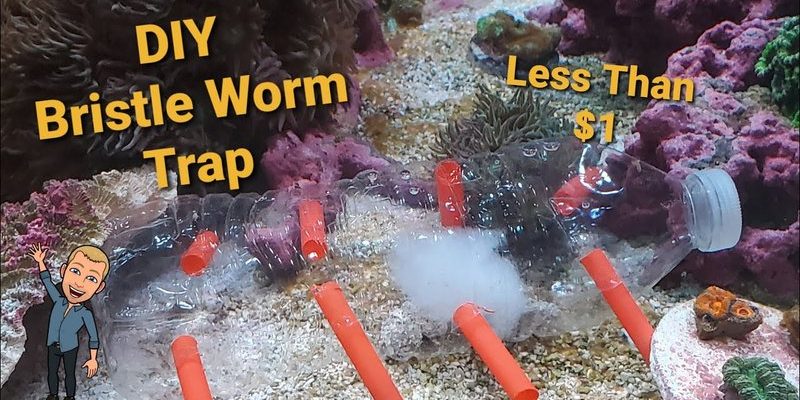
You might be wondering what exactly bristle worms are and how they got into your aquarium. These worms are typically harmless scavengers that live in marine environments. They help clean up waste, but too many of them can cause problems. So, let’s dive into some safe and effective ways to remove bristle worms from your tank without causing distress to your aquatic friends.
Understanding Bristle Worms
Bristle worms are segmented worms commonly found in saltwater aquariums. They’re usually reddish-brown or greenish and can grow quite long—up to a foot! While they can play a beneficial role in cleaning up uneaten food and debris, their population can explode if conditions allow it.
You might be wondering how they got into your aquarium in the first place. Often, new live rock or coral can harbor these little guys, so quarantining your new additions is a good practice. Their rapid reproduction can turn into a real headache, especially if they begin to outcompete for food with your fish and other important tank residents.
Why DIY Traps are a Great Choice
Using DIY traps to remove bristle worms is not just eco-friendly, it’s also safer for your fish and plants. Unlike commercial chemical treatments, these traps won’t disrupt the delicate balance of your aquarium’s ecosystem. Plus, you can make traps with items you probably already have at home.
Imagine setting up a simple trap that catches the pests without harming the environment or your beloved fish. That’s the main idea here! By using materials found around the house, you can create an effective solution that’s cost-effective and harmless.
Types of DIY Traps
When it comes to trapping bristle worms, you’ve got a few effective options. Here are three popular methods you can try:
- Container Trap: This is basically a small container that attracts bristle worms to crawl in but makes it difficult for them to escape.
- Food Bait Trap: This method uses food to lure the worms. A piece of shrimp or fish can attract them, and you can scoop them out easily.
- Plastic Bottle Trap: Cut the top off a plastic bottle and invert it. Place bait inside, and the worms will swim in but struggle to swim back out.
Each of these traps has its merits, and you might find that one works better for your situation than another. Let’s go into more detail about how to set them up.
Container Trap: A Simple Yet Effective Solution
Setting up a container trap is straightforward. All you need is a small container—something like a glass jar or a plastic cup. Here’s how to make it work:
1. **Choose Your Container:** A clear container makes it easier to see if you’ve caught any worms.
2. **Add Bait:** Place a piece of shrimp or fish inside the container. The smell will attract the worms.
3. **Position it Right:** Set the trap near areas where you’ve noticed high worm activity.
Let it sit for a few hours or overnight. In the morning, check your container. You’ll likely find some bristle worms caught inside!
Food Bait Trap: Luring Them In
This trap works on the principle that bristle worms will be attracted to food. Here’s how to create a food bait trap:
1. **Select Your Bait:** Use something that smells strong, like shrimp or fish.
2. **Tie it Down:** Attach the bait to a piece of fishing line or thread so you can pull it back out without reaching into the tank.
3. **Place the Bait:** Drop the bait into areas with lots of worms, and wait for them to come and snack.
Once you see some worms munching on the bait, you can gently pull it out and dispose of the worms safely.
Plastic Bottle Trap: An Ingenious Method
If you have an empty plastic bottle lying around, you can transform it into a bristle worm trap in no time. Here’s how:
1. **Prepare the Bottle:** Cut the top off the bottle so that it looks like a funnel.
2. **Add Bait:** Put your bait inside the bottle.
3. **Inverted Position:** Invert the bottle and place it in the tank, ensuring it’s weighted down so it doesn’t float away.
The bristle worms will swim into the funnel but will struggle to find their way out. Be sure to check it regularly and dispose of any trapped worms.
Other Considerations for Your Aquarium
While trapping is effective, it’s essential to consider why bristle worms may be overpopulating in the first place. Here are some tips to help keep their numbers in check:
– **Limit Food Supply:** Avoid overfeeding your fish. Only feed what they can eat in a few minutes. Excess food can attract bristle worms.
– **Regular Maintenance:** Clean your tank regularly, including removing uneaten food and debris that can feed these worms.
– **Introduce Natural Predators:** Certain fish like wrasses and some types of triggerfish will eat bristle worms, helping to control their population naturally.
Implementing these practices can help maintain a balanced ecosystem in your aquarium, making it less hospitable for unwanted guests.
Incorporating these DIY traps into your routine can make a big difference in managing bristle worm populations in your aquarium. It’s all about being proactive—taking the time to set up these traps while also maintaining your tank’s overall health. By keeping your fish and plants safe, you’re ensuring a vibrant underwater world that’s enjoyable for everyone.
Remember, you don’t have to resort to harsh chemicals. With a few simple steps and some household items, you can manage bristle worms safely. Happy fishkeeping!

